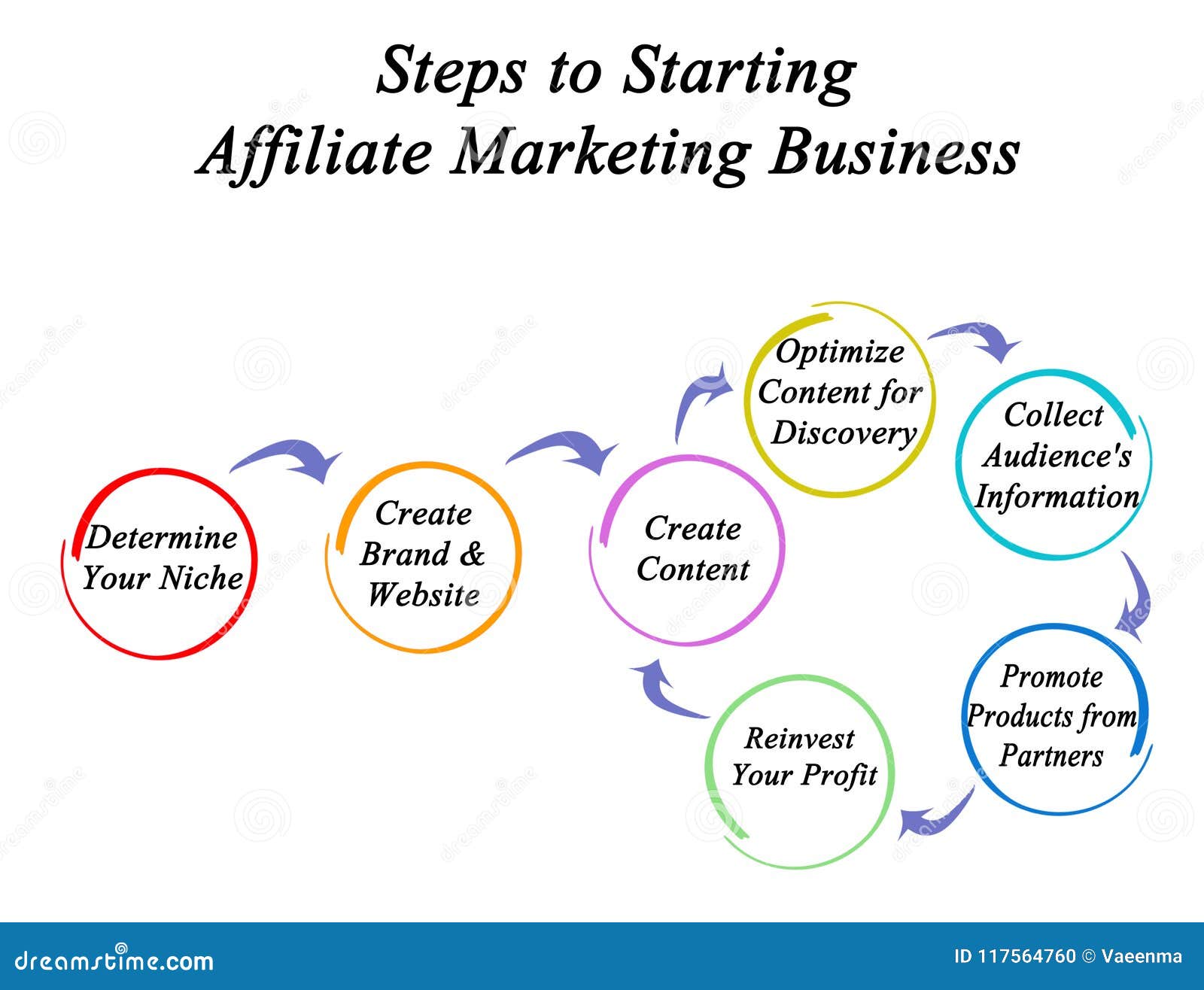Getting Started with Zero Initial Investment
Affiliate marketing has become a popular way for individuals to earn income online without requiring a significant upfront investment. With the rise of digital marketing, it’s now possible to start an affiliate marketing business with little to no initial costs. In this article, we’ll provide a step-by-step guide on how to start affiliate marketing with no money, helping you to get started on your journey to online success.
The concept of affiliate marketing is simple: promote products or services from other companies and earn a commission on any sales generated through your unique affiliate link. This performance-based marketing model allows individuals to monetize their online presence, whether it’s through a website, social media, or email marketing.
One of the biggest advantages of affiliate marketing is its low barrier to entry. With no initial investment required, individuals can start promoting products and earning commissions quickly. However, it’s essential to note that success in affiliate marketing requires dedication, hard work, and a willingness to learn and adapt.
Throughout this article, we’ll provide a comprehensive guide on how to start affiliate marketing with no money, covering topics such as choosing a profitable niche, setting up your online presence, creating valuable content, and building an audience. By following these steps, you’ll be well on your way to establishing a successful affiliate marketing business.
So, if you’re ready to start your affiliate marketing journey with zero initial investment, let’s dive in and explore the first step: understanding the basics of affiliate marketing.
Understanding the Basics of Affiliate Marketing
Affiliate marketing is a form of online marketing that involves promoting products or services from another company and earning a commission on any sales generated through your unique affiliate link. This performance-based marketing model allows individuals to monetize their online presence, whether it’s through a website, social media, or email marketing.
There are several types of affiliate programs, including Amazon Associates, ShareASale, and ClickBank. Each program has its own set of rules, commission rates, and product offerings. As an affiliate marketer, it’s essential to understand the terms and conditions of each program and to only promote products from reputable companies.
The role of the affiliate marketer is to promote products to potential customers and to earn a commission on any sales generated through their unique affiliate link. This can be done through various marketing strategies, including content marketing, social media marketing, and email marketing.
One of the benefits of affiliate marketing is that it allows individuals to earn income without having to create their own products or services. This makes it an attractive option for those who want to start an online business with little to no initial investment.
However, affiliate marketing is not without its challenges. It requires a significant amount of time and effort to build a successful affiliate marketing business. Additionally, affiliate marketers must comply with the Federal Trade Commission (FTC) guidelines on affiliate marketing, which require transparency and disclosure of affiliate relationships.
Despite these challenges, affiliate marketing remains a popular way for individuals to earn income online. By understanding the basics of affiliate marketing and by following the steps outlined in this article, you can start building a successful affiliate marketing business with no initial investment.
Choosing a Niche with Low to No Initial Costs
When it comes to starting an affiliate marketing business with no initial investment, choosing a profitable niche is crucial. A niche is a specific area of interest or a particular market segment that you’ll be targeting with your affiliate marketing efforts.
To choose a niche with low to no initial costs, you’ll want to consider several factors, including the level of competition, the potential for profit, and the availability of free resources and tools. Here are some tips to help you research and identify a suitable niche:
Use online tools such as Google Trends and social media to research popular topics and trends. Look for areas with a high level of interest and engagement, but relatively low competition.
Identify your passions and areas of expertise. Choosing a niche that you’re passionate about can make it easier to create content and promote products.
Research affiliate programs and products in your chosen niche. Look for programs with high commission rates, reliable tracking, and a wide range of products to promote.
Consider the costs associated with promoting products in your chosen niche. Look for niches with low or no costs, such as digital products or services.
Some popular niches with low to no initial costs include health and wellness, personal finance, and online education. These niches have a high level of interest and engagement, and there are many free resources and tools available to help you get started.
By choosing a profitable niche with minimal startup costs, you can start building a successful affiliate marketing business with no initial investment. Remember to stay focused, create high-quality content, and promote products from reputable companies to achieve success in your chosen niche.
Setting Up Your Online Presence without Breaking the Bank
Establishing a professional online presence is crucial for success in affiliate marketing. However, this doesn’t mean you need to break the bank. With a little creativity and resourcefulness, you can create a website or social media profiles that effectively promote your affiliate products without incurring significant costs.
One of the most cost-effective ways to create a website is by using free website builders like WordPress or Wix. These platforms offer a range of customizable templates, drag-and-drop functionality, and user-friendly interfaces that make it easy to create a professional-looking website. Additionally, they often provide free hosting and domain names, which can help you get started with minimal upfront costs.
Another option is to leverage social media platforms like Facebook, Instagram, or Twitter to establish your online presence. Creating social media profiles is free, and you can use them to promote your affiliate products, engage with your target audience, and build your personal brand. You can also use social media management tools like Hootsuite or Buffer to schedule your posts and streamline your content creation process.
When setting up your online presence, it’s essential to keep your target audience in mind. Ensure that your website or social media profiles are visually appealing, easy to navigate, and provide value to your visitors. This will help you build trust and credibility with your audience, which is critical for success in affiliate marketing.
By following these steps, you can establish a professional online presence without breaking the bank. Remember, the key to success in affiliate marketing is to provide value to your audience, promote high-quality products, and continually optimize your strategy for better results. With persistence and dedication, you can build a successful affiliate marketing business even with no initial investment.
Creating Valuable Content to Attract Your Target Audience
Producing high-quality, engaging content is crucial for attracting and retaining your target audience in affiliate marketing. When done correctly, content can help establish your authority in a particular niche, build trust with your audience, and ultimately drive sales. The good news is that creating valuable content doesn’t have to break the bank.
One of the most effective ways to create content on a shoestring budget is to use free resources like Canva. This graphic design platform offers a wide range of templates, design tools, and features that make it easy to create professional-looking content, including blog posts, social media graphics, and email newsletters.
Another strategy is to repurpose content across different platforms. For example, you can turn a blog post into a social media post, or create a video based on a podcast episode. This approach not only saves time but also helps to maximize your content’s reach and impact.
When creating content, it’s essential to keep your target audience in mind. Understand their needs, preferences, and pain points, and tailor your content accordingly. Use keywords strategically to improve your content’s visibility in search engine results, and make sure to optimize your content for mobile devices.
In addition to written content, consider creating other types of content, such as videos, podcasts, or infographics. These formats can help to diversify your content and make it more engaging for your audience. You can use free tools like Loom or OBS Studio to create videos, or Anchor or Buzzsprout to create podcasts.
By creating valuable content that resonates with your target audience, you can establish yourself as an authority in your niche and drive sales. Remember, the key to success in affiliate marketing is to provide value to your audience, promote high-quality products, and continually optimize your strategy for better results. With persistence and dedication, you can build a successful affiliate marketing business even with no initial investment.
Building an Audience and Generating Traffic without Paid Advertising
Building an audience and generating traffic to your website or social media profiles is crucial for success in affiliate marketing. However, this doesn’t have to break the bank. There are several free traffic sources that you can use to drive visitors to your website and increase your chances of making sales.
One of the most effective ways to generate traffic without paid advertising is through search engine optimization (SEO). By optimizing your website and content for relevant keywords, you can improve your visibility in search engine results and attract organic traffic. Use free tools like Google Keyword Planner and Ahrefs to research keywords and optimize your content accordingly.
Email marketing is another powerful way to build an audience and generate traffic. By creating a mailing list and sending regular newsletters to your subscribers, you can keep them engaged and informed about your affiliate products. Use free email marketing tools like Mailchimp or Sendinblue to create and manage your email campaigns.
Social media marketing is also a great way to build an audience and generate traffic. By creating social media profiles and posting regular updates, you can attract followers and drive traffic to your website. Use free social media management tools like Hootsuite or Buffer to schedule your posts and streamline your social media marketing efforts.
Another effective way to generate traffic is through guest blogging. By writing guest posts for other websites and including a link to your website, you can attract new visitors and build backlinks to your website. Use free tools like Guest Blog Post to find guest blogging opportunities and manage your guest blogging efforts.
Finally, leverage user-generated content to build an audience and generate traffic. Encourage your website visitors to create content for you by offering incentives such as discounts or free products. Use free tools like User Generated Content to collect and showcase user-generated content on your website.
By using these free traffic sources, you can build an audience and generate traffic to your website without breaking the bank. Remember, the key to success in affiliate marketing is to provide value to your audience, promote high-quality products, and continually optimize your strategy for better results. With persistence and dedication, you can build a successful affiliate marketing business even with no initial investment.
Joining Affiliate Programs and Getting Your Affiliate Links
Joining affiliate programs is a crucial step in starting your affiliate marketing journey. With numerous programs available, it’s essential to choose the ones that align with your niche and target audience. In this section, we’ll walk you through the process of joining affiliate programs and obtaining your affiliate links.
First, research and select affiliate programs that offer products or services in your chosen niche. Some popular affiliate programs include Amazon Associates, ShareASale, and ClickBank. Each program has its own set of rules, commission rates, and cookie durations, so make sure to read and understand the terms and conditions before joining.
Once you’ve selected the affiliate programs you want to join, sign up for each program by providing the required information, such as your name, email address, and website URL. Some programs may require you to verify your email address or phone number before approving your application.
After being approved, you’ll receive access to the affiliate program’s dashboard, where you can obtain your affiliate links. These links are unique to you and track referrals from your website or social media profiles to the affiliate program’s website. You can use these links to promote products on your website, social media, or email marketing campaigns.
Use free tools like Affiliate Link Manager to create and manage your affiliate links. This tool allows you to cloak your affiliate links, making them look more professional and less spammy. You can also use it to track your affiliate earnings and monitor your performance.
When promoting products, make sure to disclose your affiliation with the product provider. This is a requirement by the Federal Trade Commission (FTC) and helps maintain transparency with your audience. You can use a simple disclosure statement like “This post contains affiliate links, which means I may earn a commission if you click through and make a purchase.”
By following these steps, you can join affiliate programs and obtain your affiliate links, setting yourself up for success in affiliate marketing. Remember to always follow the program’s terms and conditions, and to disclose your affiliation with the product provider to maintain transparency with your audience.
Tracking Your Progress and Optimizing Your Affiliate Marketing Strategy
Tracking your progress and optimizing your affiliate marketing strategy is crucial for achieving success in the industry. By monitoring your performance, you can identify areas for improvement, adjust your strategy, and increase your chances of earning commissions.
One of the most effective ways to track your progress is by using free analytics tools like Google Analytics. This tool provides valuable insights into your website’s traffic, engagement, and conversion rates, allowing you to make data-driven decisions to optimize your strategy.
Another important aspect of tracking your progress is monitoring your affiliate earnings. Use free tools like Affiliate Link Manager to track your affiliate links and earnings, and adjust your strategy accordingly. This will help you identify which products are performing well and which ones need improvement.
When optimizing your affiliate marketing strategy, it’s essential to focus on the metrics that matter most. These include click-through rates, conversion rates, and earnings per click. By improving these metrics, you can increase your chances of earning commissions and achieving success in affiliate marketing.
Additionally, use A/B testing to optimize your content, email marketing campaigns, and social media posts. This will help you identify which variations perform better and make data-driven decisions to improve your strategy.
Finally, stay up-to-date with industry trends and best practices by attending webinars, reading blogs, and participating in online communities. This will help you stay ahead of the competition and optimize your strategy for better results.
By tracking your progress and optimizing your affiliate marketing strategy, you can achieve success in the industry and earn commissions without breaking the bank. Remember to stay focused on the metrics that matter most, use free analytics tools, and continually adjust your strategy for better results.







